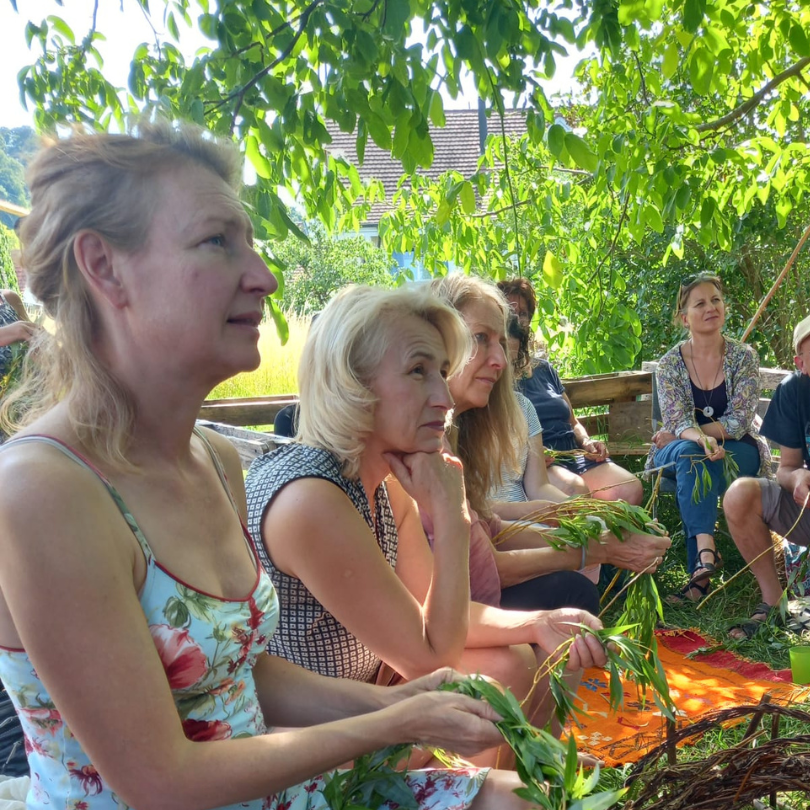
Ready for a Sip of Nature's Medicine?
Grab our Tea Garden Plant List to start your healing garden today! By growing these plants, you'll be able to blend & brew your own herbal remedies to improve your health & wellbeing with ease.

Let's Grow Better Together
Wherever you are in your garden journey and learning process, Invincible Gardens offers support and guidance so you can cultivate a gardening and herbalism practice you love.




Workshops and Events
Cultivate your gardening skills & connect with community - at the same time! Whether it’s fixing a stinky compost pile, growing the tomatoes of your dreams or finally digging into the world of herbal remedies, there are classes to help you grow what you love.

DREAM Garden Method
Create a holistic gardening & herbalism practice that provides healing & abundant harvests. This 6-week program will show you the simple steps to growing a DREAM garden, so you will have all the answers to grow your own food, flowers & medicine.

Personal Garden Mentor
Grow your gardening confidence & intuition in a 60 min. private consultation with Dev. We'll discuss your specific growing space, location and personal needs to develop a customized garden plan that brings you more ease and joy.
Hi there, Garden Friend! I'm Dev.

I have been in love with the science, art and mystery of Nature since forever!
From the majesty of vast spaces like Alaska's wilderness to the intricate patterns of flower petals in my own garden, my connection to nature is what fuels my daily life and nourishes my inner landscape.
What connects you with Nature?
I believe we grow better together and I am so delighted to welcome you to my patch of the internet where I share from my years of organic gardening around the globe.
Want to dig a little deeper? Head over to my About page where you can read more of the story and peek into my gardens.
Get Our
Tea Garden Plant List
With our seasonal tips for growing a garden & life you LOVE delivered right to your inbox, connecting with nature can be as easy as a cup of tea.
Lorem ipsum dolor sit amet, consectetuer adipiscing elit, sed diam nonummy nibh euismod tincidunt ut laoreet dolore magna aliquam erat volutpat. Ut wisi enim ad minim veniam, ipsum dolor sit amet, consectetuer adipiscing elit, sed diam nonummy nibh euismod tincidunt ut laoreet dolore magna aliquam erat volutpat. Ut wisi enim ad minim veniam, psum dolor sit amet, consectetuer adipiscing elit, sed diam nonummy nibh euismod tincidunt ut laoreet dolore magna aliquam erat volutpat. Ut wisi enim ad minim veniam, ipsum dolor sit amet, consectetuer adipiscing elit, sed diam nonummy nibh euismod tincidunt ut laoreet dolore magna.
- Jane Awesome, Acme Co.
Introduce Your Content
These could be your blog posts, articles, videos or podcast episodes.

Explain The Content
Lorem ipsum dolor sit amet, consectetur adipisicing elit. Autem dolore, alias, numquam enim ab voluptate id quam harum ducimus cupiditate similique quisquam et deserunt, recusandae.

Explain The Content
Lorem ipsum dolor sit amet, consectetur adipisicing elit. Autem dolore, alias, numquam enim ab voluptate id quam harum ducimus cupiditate similique quisquam et deserunt, recusandae.

Explain The Content
Lorem ipsum dolor sit amet, consectetur adipisicing elit. Autem dolore, alias, numquam enim ab voluptate id quam harum ducimus cupiditate similique quisquam et deserunt, recusandae.

Explain The Content
Lorem ipsum dolor sit amet, consectetur adipisicing elit. Autem dolore, alias, numquam enim ab voluptate id quam harum ducimus cupiditate similique quisquam et deserunt, recusandae.
Explore
On Social
Free Space

Facebook
Instagram
Youtube
Pinterest